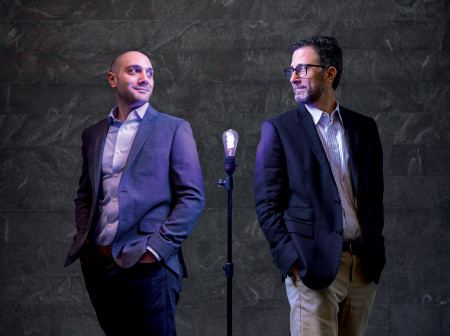The advance of science and technology has brought remarkable gains over the last two centuries. In 1870, U.S. per capita income averaged just 6% of what it is today. Most people were farmers and, limited by rudimentary tools and know-how, could produce very little output per hour. In the 1880s, life expectancy was just 48. Diseases like typhoid and cholera were common, and antibiotics did not exist. But a steady series of advances has slowly — and dramatically — changed this picture.
Today’s U.S. workers, with their advanced tools and know-how, are extremely productive. For example, a single combine harvester on a farm in Illinois recently set a world record by harvesting 3.5 million pounds of corn in one day. On the health side, life expectancy is decades longer, and recent breakthroughs in mRNA-based vaccines, applied to COVID-19, are just the latest in a series of scientific and technological advances that have improved our lives.
People broadly understand that science and innovation are important. At the same time, there is substantial public skepticism about the value of investments in the scientific and innovative enterprise. The esoteric nature of science can make such efforts hard for the public to comprehend. And research itself, as a step into the unknown, inevitably produces many failures, which can breed more skepticism.
Today the U.S. devotes a very small share — less than 3% — of its total gross domestic product every year to research and development (R&D). Federally funded R&D as a share of the U.S. economy is half its level from the 1980s and approaching its lowest level in the last 70 years. Perhaps we should not be surprised that the U.S. has also been experiencing slower economic growth.
But how do we measure the importance of research and the return on R&D investment? I’ve been working with colleagues to answer these questions. In one study, former Northwestern postdoctoral fellow Mohammad Ahmadpoor and I investigated the link between private sector inventions and prior scientific research. After studying tens of millions of scientific papers, we found that the majority of such articles produced roots of knowledge for future inventions. Moreover, the inventions with the highest value are the ones most closely related to prior scientific advances.
And the linkages from science to the market are often indirect. Take Uber, for example, which relies on GPS satellites to track our locations. The GPS system works by comparing extremely accurate time signals from the satellites’ atomic clocks. But because satellites move at high speed and experience less gravity, these clocks experience time differently than we do on Earth — which means they must be adjusted according to Einstein’s theory of relativity. A mobile app that appears to be a revolutionary business idea, in reality, depends deeply on essential foundations of science.
R&D is an incredibly high-return machine that pays for itself many times over. But because the benefits are often indirect, the researchers and funders do not often get much compensation — as Einstein’s estate receives no Uber stock.
It is therefore up to the public at large to support science and R&D, just as the public benefits from it. The U.S. could double its investments in R&D and reap enormous returns, producing higher standards of living, better wages and longer, healthier lives. Asking Congress to devote more resources to science should be among our highest priorities.
Benjamin F. Jones is the Gordon and Llura Gund Family Professor of Entrepreneurship and professor of strategy at the Kellogg School of Management.




Reader Responses
No one has commented on this page yet.
Submit a Response